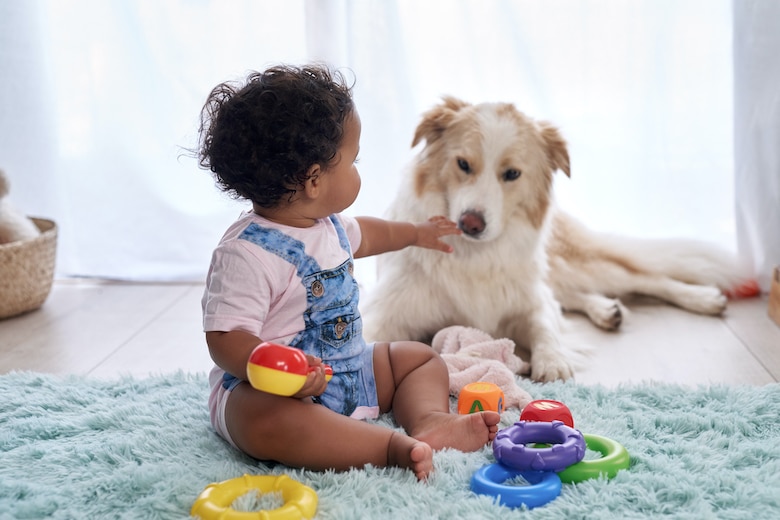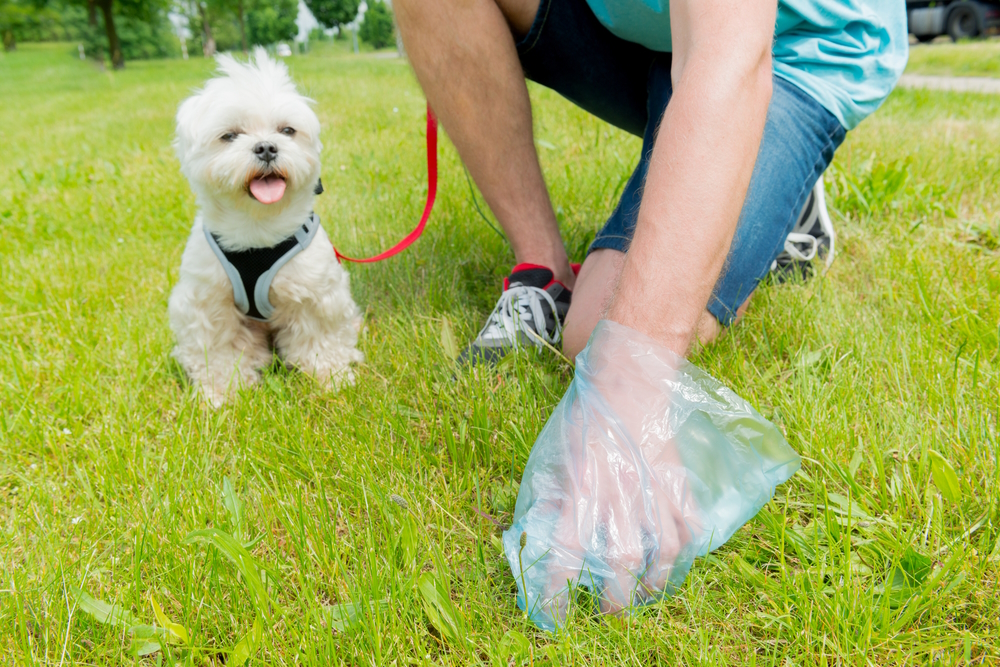Before your baby was born, you played newborn crying videos on YouTube so your dog could get used to the sound. You had someone drop off the receiving blanket before you came home from the hospital. And when the time came to introduce the two, you remained calm and collected. It went swimmingly, and the dog quickly accepted your tiny human.
Related: How to Prepare Your Dog for the New Baby: Tips From a Trainer
Then your tiny human morphed into a toddler, and started crawling and walking and pulling on the dog’s fur. Suddenly, what seemed to be a budding friendship had turned into something of a circus.
Parents often focus so much on the first time a dog meets his human sibling but get blindsided by how the relationship changes as the baby gets more mobile.
“The dogs and toddlers need to learn what the other likes, how they want to be treated so they can not only tolerate each other but really like each other,” says Marina Selinger, a certified trainer for Tractive.
Marina shares ways to keep the peace between toddlers and dogs.

Problem: Noisy Toddlers
Your pup has likely gotten used to the sound of a baby crying, but toddlers start to make new noises as they find their voices. These sounds can include high-pitch screeches and squeaks the dog may find upsetting.
Solution: Positive Reinforcement. Have the dog associate the loud noise with something good. “If there is a loud noise, the dog gets a treat,” suggests Marina.
Problem: Your Kid Grabs at the Dog’s Fur
Your dog may have naturally taken to your newborn, but babies need to learn how to interact with dogs. They often start by pulling on their tails and fur — they’re not trying to hurt the dog, but they don’t know any better.
Solution: “With toddlers, it’s best to show to tell,” Marina says. Place your hand on top of the child’s and show them how to pet the dog gently. If you notice your kid grabbing the dog’s face or pulling his fur or tail, try redirecting them to something else or telling them, “No. That will hurt.”

Problem: Your Dog Thinks the Kids’s Toys are Their Toys
Dog toys and child toys are similar — they’re often stuffed or textured and make noises. But you don’t want the dog chewing up the lovey your kid relies on for comfort.
Solution: Train your dog to only go after toys at your command. Marina tells her dogs to “get it” if she is OK with them picking up a toy. “Leave it” also works if a child drops a toy, and the dog is going after it (this also works if the toddler drops food on the floor). Marina says it’s best to try to teach these commands before the baby is even born. “Some of these things take a long time,” she says. But if you didn’t, don’t be so hard on yourself — you had a ton of things to do to get ready for baby. Consistently work with your dog on the command, and consider hiring a trainer to help.
Problem: The Toddler or Dog Needs Space
Your dog and toddler love going everywhere together — almost. A dog may be sensitive about having anyone invade their “space,” such as a crate or bed. And as cute as it is to see your pup and baby snuggled up and napping together, it’s not particularly safe for either if the dog climbs into the crib.
Solution: Help the two learn that they each have a safe space. “Teach the baby to leave the dog alone if he’s in his bed,” Marina says. If the toddler is high-tailing it towards the pup’s bed, try redirecting it with a toy. Or, explain, “The dog shouldn’t go in your bed because it’s yours. We’re going to stay away from the dog’s bed because it’s his special space.” You can also redirect the dog with treats. “Give a dog a treat to go somewhere else than the baby’s room if he’s headed there,” Marina suggests. “That way, he knows you like it better when he [goes to this room] instead of [baby’s].”Or, block the spaces with a baby gate to prevent either from entering.
Remember: Keep an Eye Out
Dogs and young children can be impulsive. As cute as they are and as much as they may love each other, sometimes, things get out of hand. It’s important there’s always an adult in the room to prevent (or quickly stop) scuffles.
“You cannot trust both of them 100 percent,” Marina says.
Featured photo: Antonio_Diaz/Getty Images









